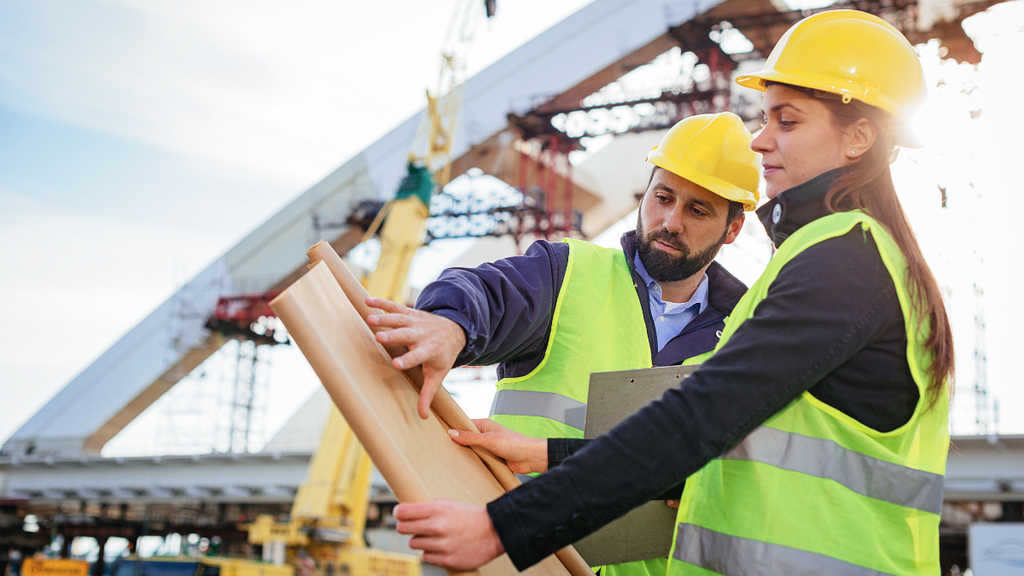Geotheta - Questions
Geotheta - Questions
Blog Article
The Definitive Guide for Geotheta
Table of ContentsThe 6-Second Trick For GeothetaGeotheta Fundamentals ExplainedGeotheta Things To Know Before You Get ThisThe Main Principles Of Geotheta The smart Trick of Geotheta That Nobody is Talking About

They perform site investigations, collect examples, execute lab examinations, and evaluate information to evaluate the viability of the ground for building and construction jobs - Consulting Engineer. Based upon their searchings for, geotechnical designers give recommendations for foundation layout, slope stability, keeping structures, and reduction of geotechnical risks. They team up with other experts, such as architects, architectural engineers, and building and construction teams, to make certain that geotechnical factors to consider are incorporated right into the general task style and execution
By analyzing the behavior and residential or commercial properties of soil and rock, they can identify possible geotechnical risks such as landslides, dirt settlement, or incline instability. Their knowledge assists stop failings or crashes that can endanger lives and residential property. Here are some thorough tasks and obligations of a geotechnical designer: Website Investigation: Geotechnical designers conduct website investigations to collect information on subsurface problems.
They interpret the information to comprehend the buildings and habits of the dirt and rock, including their toughness, permeability, compaction features, and groundwater conditions. Geotechnical Analysis and Design: Geotechnical engineers examine the data accumulated throughout site investigations to examine the security and suitability of the site for building and construction tasks. They do geotechnical computations and modeling to review elements such as bearing ability, negotiation, slope security, lateral planet pressures, and groundwater flow.
Geotheta Can Be Fun For Anyone
Foundation Layout: Geotechnical designers play a critical duty in making structures that can safely support the designated structure. They examine the soil conditions and tons needs to establish the appropriate foundation type, such as superficial foundations (e.g., footings), deep structures (e.g (https://sketchfab.com/geotheta)., stacks), or specialized strategies like dirt enhancement. They think about elements such as settlement limits, bearing capability, and soil-structure interaction to establish optimum structure styles
They assess building and construction strategies, display website activities, and perform area examinations to validate that the style recommendations are followed. If unforeseen geotechnical issues arise, they evaluate the scenario and offer recommendations for remediation or modifications to the style. Threat Assessment and Mitigation: Geotechnical engineers examine geotechnical hazards and dangers linked with the project website, such as landslides, liquefaction, or soil disintegration.

Partnership and Communication: Geotechnical designers function carefully with other experts included in a job, such as engineers, structural designers, and construction groups. Reliable interaction and partnership are important to incorporate geotechnical factors to consider into the overall task design and building and construction process. Geotechnical designers supply technical knowledge, solution inquiries, and ensure that geotechnical requirements are fulfilled.
The Only Guide for Geotheta
Here are some kinds of geotechnical engineers: Structure Designer: Structure engineers specialize in making and examining foundations for frameworks. They assess the soil conditions, lots needs, and website characteristics to establish the most proper foundation kind and design, such as shallow structures, deep foundations, or specialized techniques like pile foundations.
They review the variables influencing slope security, such as dirt properties, groundwater problems, and slope geometry, and establish techniques to stop slope failings and mitigate risks. Earthquake Engineer: Earthquake engineers concentrate on examining and developing frameworks to hold up against seismic pressures. They analyze the seismic danger of a site, evaluate soil liquefaction capacity, and establish seismic style requirements to ensure the security and durability of frameworks throughout quakes.
They perform field testing, accumulate samples, and assess the gathered data to characterize the dirt properties, geologic developments, and groundwater problems at a site. Geotechnical Instrumentation Engineer: Geotechnical instrumentation designers concentrate on monitoring and measuring the actions of dirt, rock, and structures. They mount and keep instrumentation systems that check variables such as dirt settlement, groundwater degrees, incline movements, and structural variations to analyze efficiency and offer early warnings of possible issues.
Little Known Questions About Geotheta.
They carry out tests such as triaxial examinations, consolidation examinations, direct shear tests, and leaks in the structure examinations to gather data for geotechnical evaluation and style. Geosynthetics Engineer: Geosynthetics designers concentrate on the style and application of geosynthetic products, such as geotextiles, geogrids, and geomembranes. They make use of these materials to enhance soil stability, enhance inclines, supply drainage services, and control disintegration.
They have a tendency to be investigatory individuals, which implies they're intellectual, reflective, and analytical. They are interested, methodical, rational, analytical, and logical. Some of them are likewise social, implying they're kind, charitable, cooperative, patient, caring, useful, compassionate, skillful, and pleasant - Tailings Engineer.
In the workplace atmosphere, geotechnical engineers make use of specialized software program devices to do computations, develop styles, and examine data. They prepare reports, review project specifications, communicate with customers and employee, and coordinate task tasks. The workplace setup offers a favorable atmosphere for study, evaluation, and cooperation with various other professionals entailed in the project.
How Geotheta can Save You Time, Stress, and Money.
They often visit task sites to conduct website investigations, assess geotechnical problems, and gather information for analysis. These gos to involve traveling to various locations, occasionally in remote or difficult surfaces. Geotechnical engineers may do soil tasting, conduct tests, and screen building and construction tasks to make sure that the geotechnical aspects of the project are being executed appropriately.
Geotechnical designers also work in specialized geotechnical laboratories. Geotechnical research laboratory engineers function extensively in these atmospheres, managing testing tools, operating instruments, and recording information.
Report this page